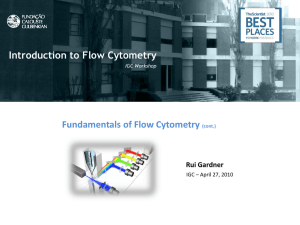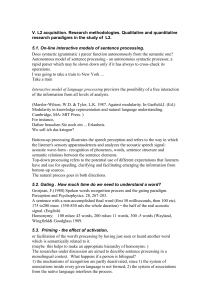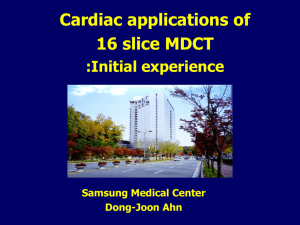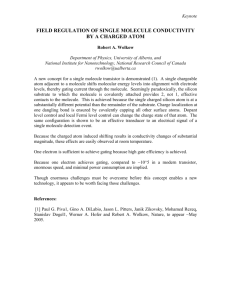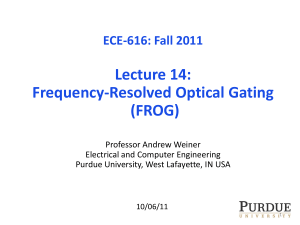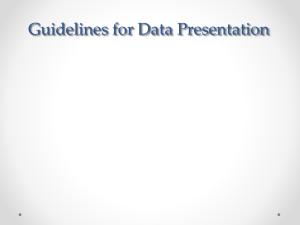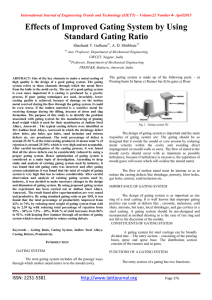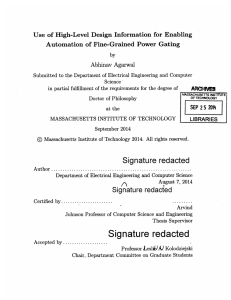投影片 1
advertisement
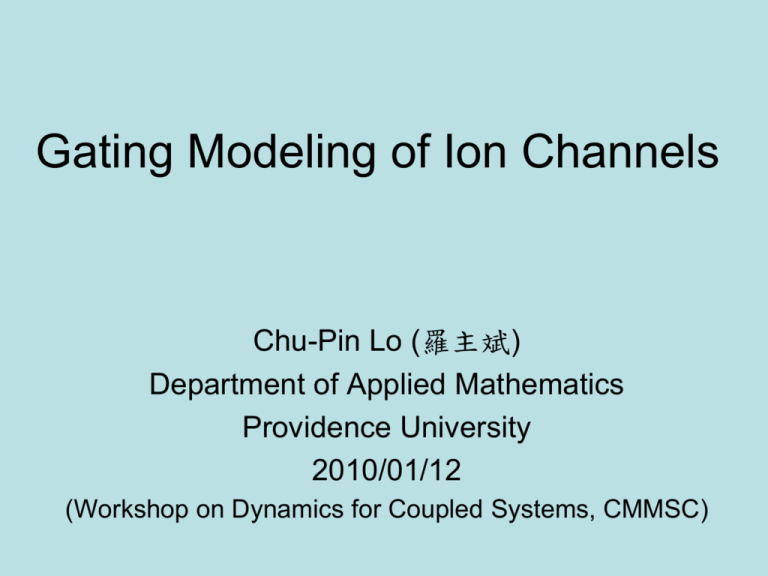
Gating Modeling of Ion Channels Chu-Pin Lo (羅主斌) Department of Applied Mathematics Providence University 2010/01/12 (Workshop on Dynamics for Coupled Systems, CMMSC) Outline Cardiac Electrophysiology Modeling Techniques (electrical part) Full Current Flux Form: PNP model Gating Modeling (1). Experiment Measurements for Gating Issues (2). Classical Kinetics (3). Hodgkin-Huxley Theory (cell scale) (4). Markovian Process Method (channel scale) (5). Smoluchowski model (channel scale) Pharmacological Applications Cardiac Electrophysiology Electrophysiology of the cardiac muscle cell ECG & Action Potentials Single Cell Action Potential (Microscopic) ECG (Macroscopic) Mesoscopic property Macroscopic property Computing of ECG (心電圖) Computing of ECG (心電圖) • Isotropic, space homogeneous of conductive tensor, and infinite media ECG= Where and Computing of ECG (心電圖), Cont. • Bounded media, piecewise constant and isotropic conductive tensor ECG= boundary element method Computing of ECG (心電圖), Cont. • Real case (finite media, anisotropic and space heterogeneity conductive tensor) finite difference, finite element, finite volume methods Cellular Basis of ECG Modeling Techniques (electrical part) Modeling Approaches (cell and channel scale) • Poisson-Nernst Planck+Density functional Theory (for full open flux) (channel scale) • Barrier model (for full open flux) (channel scale) • Hodgkin-Huxley Theory (for gating issue)(cell scale) • Markovian Process Method (for gating issue)(channel scale) • Smoluchowski model (for gating issue)(channel scale) (sub)channel scale Current Form: single channel and single cell (1) Single channel current: I_s=(gating factor/open probability) ‧(full open flux) (2) Single cell current: I_t=(total channels number) ‧I_s Tissue scale Tissue scale Mesoscopic property Macroscopic property Organ scale Rat Left Ventricle Fiber-Sheet Structure Incorporation of fiber-sheet structure into bidomain Model Full Current Flux Form: Poisson-Nernst-Planck Model (PNP) & Density Functional Theory (DFT) PNP model (continuum model) Nernst- Planck equation (derived from molecular Langevin equation) continuity equation Poisson equation for electrostatic potential Density Functional Theory (DFT): excess chemical potential description (finite size charged particle) Simulation Results: flux form Simulation Result: Permeation Selectivity for Ca2+ Two famous flux form: (1). Goldman-Hodgkin-Katz (GHK) current form Conditions: short channel Or low ionic concentrations of either side of the membrane Or constant field PNP with only ideal electrochemical potential (point particle) Two famous flux form: (2). Linear I-V relation (Ohm’s law) Conditions: long channel high ionic concentrations of either side of the membrane PNP with only ideal electrochemical potential (point particle) Gating Modeling • • • • • Experiment Measurements for Gating Issues Classical Kinetics Hodgkin-Huxley Theory (cell scale) Markovian Process Method (channel scale) Smoluchowski model (channel scale) Ion Channel Structure Experiment Measurements for Gating Issues • Fluctuation analysis • Single-channel recording • Gating current Fluctuation Analysis Single Channel Recording Single channel recording • Mean open (shut) time • The time to first opening of a channel (first-latency distribution) • Number of times that a channel opens before inactivation • Conditional probability that an open period of a certain length is followed immediately by a closed period of a certain length • Hidden Markov analysis Complement to classical kinetics (single channel recording) macro current single channel current Hidden Markov Analysis Gating Current Gating Mechanism: gating current (two states transition) •Conformational change of channel protein •Gating current (charge): energy supply one-step conformational change probability ratio of open to closed states by Boltzmann equation open probability of channel Bertil Hille, 2001 Gating Mechanism: gating current (multiple states transition) Gating Mechanism: gating current (multiple states transition):conti Bertil Hille, 2001 Classical Kinetics Gating Mechanism: Classical kinetics Gating Issue: Hodgkin-Huxley Model (single cell model) stimulus current capacitance current Ionic currents Model Formalism and Experimental Protocol Design Activation (steady state) protocol: tail current analysis Inactivation (steady state) protocol Recovery protocol (1) Recovery protocol (2) Modeling formula for recovery kinetics Time course determination: time constant inactivation deactivation activation recovery Deactivation experimental protocol (used for time constant determination of deactivation phase) Gating Issue: Markov Model (single channel and cell model, discrete protein state) Example 1 (Fitzhugh, 1965) (Markovian version of HH model) INa channel IK channel Example 2 (Vandenberg, Bezanilla, Perozo, 1990,1991)(match the single channel recording and gating current measure) INa channel IK channel Example 3 INa IK transition rate Comparison (INa) Comparison (action potential) Differences between Examples • Activation and inactivation are kinetically independent in example 1 and dependent in example 2,3 • Fast activation and slow inactivation in examples 1,2; slow activation and fast inactivation in example 3 Relation between HH & Markov Models Relation between HH & Markov Models, Conti. Relation between HH & Markov Models, Conti. transition rate determination Gating issue: Smoluchowski Model (Fokker-Planck type model in energy landscape, continuuum protein state) Probability Flux Calculation (Fokker-Planck Equation) Smoluchowski Model : Example1 Example 2 Potential of mean field (PMF) Langevin Equation Computation of rate constant mean first passage time (mfp) rate constant = 1/Tmfp Computation of Gating Current master equation gating current Example 3 Potential Calculation Linearized PoissonBoltzman with transmembrane potential effect Movie Pharmacological Applications Thanks for your Attention !
